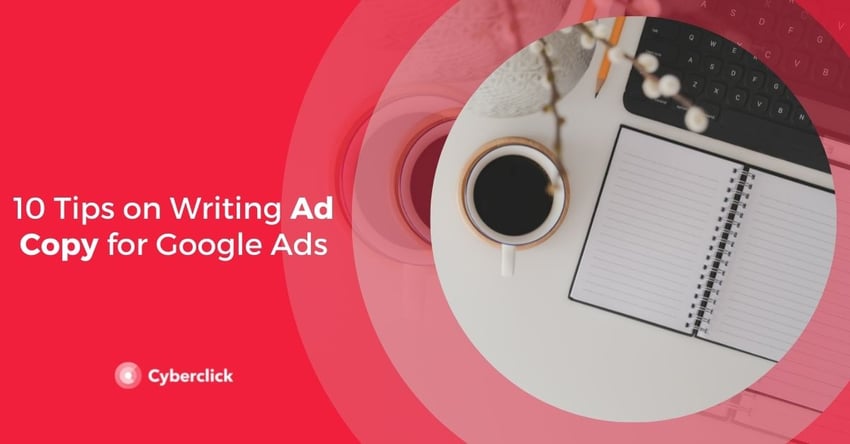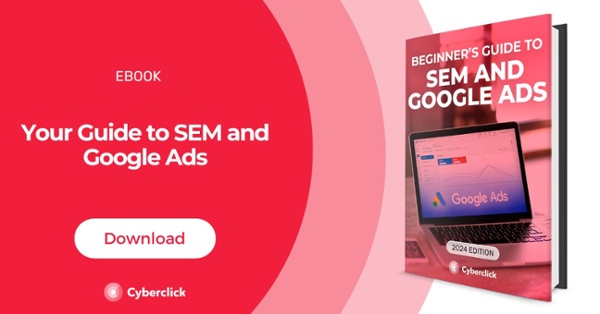Google Ads has changed a lot in the last few years. We now have new formats, product placements, the ability to integrate with ecommerce catalogs, and much more.
Despite all these changes, the keys to writing compelling ad copy are still the same as they were decades ago. We've rounded up 10 recommendations from Search Engine Journal on how to write the best Google Ads. Make sure to take note of these for your advertising strategy!

10 Tips for Writing Google Ads Copy
1. The More Informative Your Ad Is, the More Convincing It Will Be
The first tip for writing better Google Ads copy comes from David Ogilvy.
Ogilvy believes the key to successful ads is giving customers useful information that they can act on.
You can use two tools to apply this to your Google Ads: Google's search engine autocomplete suggestions and Answer the Public.
With these techniques you can enter keywords related to products and services and explore different results to understand what your customers are searching for and what questions they are seeking answers to. This way, you will be able to identify their main queries and concerns and answer them with your Google Ads copy.
2. Use the Scarcity Principle
The scarcity principle comes from the book Influence: The Psychology of Persuasion, by Robert Cialdini. Cialdini was a psychologist who researched what makes people feel attracted to something. One of his main conclusions was that the less available something is, the more likely people are to be interested in it.
Marketers have been using this principle for decades to write successful ad copy. But be careful! Since it is based on exclusivity, this technique can stop working if it is overused.
For example, if you offer a discount every month, and consistently tell people to take advantage of it before it runs out, it will eventually stop being effective. However, if you focus on special holidays like Black Friday or Christmas, the scarcity principle can provide a very powerful boost to your online sales.
3. Choose Your Battles Wisely
It is essential to understand how consumers perceive your competition. For example, if a competitor is perceived as a leader and also offers lower prices, it will be very difficult for you to break into the market no matter how effective your ad copy is.
As an advertiser, you must find what sets you apart in a competitive market in order for Google Ads to properly position your product. There are always features you can emphasize. For example, maybe you are more familiar with consumer preferences and trends in your local market, your customer reviews are better, or you always answer customer calls and complaints on time.
4. Identify Your Consumers’ Needs
According to Claude Hopkins, author of the book Scientific Advertising, customers will not buy your product unless you can solve their specific needs. It's a simple principle, but it's easy to lose sight of.
Fortunately, there are many tools you can use to identify the needs of your customers. As seen in the first tip, it's very easy to find out what your customers really want. Most of the time, it is something really simple.
Once you've identified this, make it prominent in your Google Ads copy. Users don't want you to tell them about you and your product, they want to know how you can address their needs.
5. Be Empathetic
In his classic book How to Make Friends and Influence People, Dale Carnegie advised talking to customers about what they want and showing them how to get it. In the end, your advertising should focus on your customers' needs, not your own.
To connect on an emotional level with your consumers, you have to be able to empathize with them. If you don't know what your audience's emotional needs are, it is crucial to do some research. The best way to collect insights is to ask your target audience directly what their pain points are. You can also look for online communities around key topics of your brand and see what people are saying.
6. Don’t Try to Impress Other Advertisers
Remember that the goal of advertising is not to surprise other advertisers with clever ads but to reach your target audience. Applied to your Google Ads copy, this means that sometimes you have to stop trying to make everything sound witty or clever. Just be clear!
7. Use Language Your Audience Will Recognize
Another of Ogilvy's maxims is to speak to consumers in everyday language. You have to make your audience identify with what you are telling them in a way that is simple and relatable.
The first step is to stay away from overly technical jargon, unless you are addressing a very specific audience that speaks this way on a daily basis. The second is to research what your target audience "sounds like" by talking directly to them or visiting their online communities.
8. Find Your Angle
In The 22 Immutable Laws of Marketing, Ries and Trout detail 22 marketing principles that should always be respected.
One of these principles is that to beat the market leader you don't have to be better than that brand, but position yourself in the opposite way. For example, Apple, which is not the market leader, positions itself as the complete opposite of Android.
9. The Law of Concentration
Another principle in The 22 Immutable Laws of Marketing is the law of concentration.
With Google Ads, there are a lot of organic and paid results competing for consumers' attention. Similarly, many companies have related tools and solutions.
The solution is to narrow the focus of your ads as much as possible. Instead of talking about everything you can offer, focus on a very specific problem and offer a single solution. This ensures that your message is easy to understand.
10. Prove What You Say
Almost 80 years ago, Victor Schwab stated that for advertising to work, it has to provide consumers with a rational justification for their emotional decisions. This principle is stated in his book How To Write a Good Advertisement.
Your Google Ads copy can include facts, figures, testimonials, scientific studies, or other concrete evidence that makes the consumer feel good about buying your product or service. This is especially important for products that are expensive or require an ongoing fee (e.g. monthly memberships).
Licenciada en Publicidad y Relaciones Públicas por la UAB. Digital Marketing Strategist en Cyberclick.
Degree in Advertising and Public Relations from the UAB. Digital Marketing Strategist at Cyberclick.






Leave your comment and join the conversation